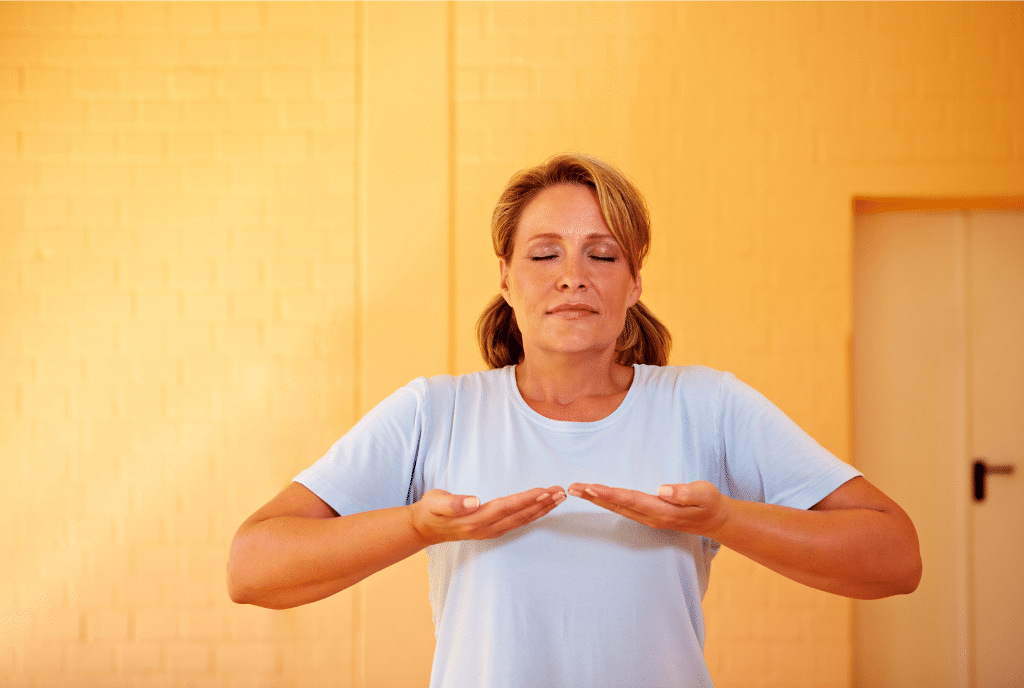Let me guess – You’ve gone to the old Google machine and typed in “how to get rid of anxiety” only to find a whole bunch of articles and blogs containing breathing exercises. Perhaps you’ve tried a breathing exercise or two before, but found them unsuccessful in helping you get rid of your anxiety.
You must be feeling real frustrated right now.
First of all, I want you to know that you are not alone. A lot of people feel like breathing exercises do not work for them. And while that truly is the case sometimes (not all interventions work for every person), a lot of people enter into the practice with unrealistic expectations to no fault of their own.
I think we can all agree that anxiety is a less than pleasant experience, so for many of us our first instinct is to want to make it go away. Makes sense right? You don’t like something, so you get rid of it? And you’d be right – this concept works great in our external world. We don’t like our couch? You get rid of it. You don’t love our partner’s Star Wars bedsheets? You toss ’em; but, this same idea does not work so well internally. It’s near impossible to take an emotion and simply get rid of it. So, as you can imagine, this causes us some distress. Enter in the breathing exercises… and also our first misconception.
Misconception #1: Breathing exercises are designed to take away distress and make us feel better.
While this would be so lovely if it were true, this unfortunately is not the reality. These exercises are not designed to make anxiety go away… or any other challenging thought, feeling, or sensation for that matter.
They are, however, designed to help regulate the nervous system just enough to get your brain back online and your body headed towards homeostasis. When you are feeling anxious your brain sounds the alarm system and activates the sympathetic nervous system, sending our body into the Flight-Fight-Freeze response. According to Polyvagal Theory, the vagus nerve is an important part of this operation and sends messages to different areas of the body to pump up the production of stress hormones, redirect glucose to your muscles, increase your heart rate, and stop digestion (hello, nausea!). Engaging in breathing, on the other hand, helps you to relax the vagus nerve, activating the parasympathetic nervous system (think: rest and digest), aiding the body in slowly coming back to an optimal state in which you can problem-solve and reason.
It’s important to note that while a breathing practice may decrease the intensity of some of these challenging internal experiences, sometimes it won’t, and that’s okay too. As such, it is important to keep your expectations realistic when it comes to implementing a breathing practice.
Misconception #2: It’s important to use breathing exercises only when you are feeling anxious.
Let’s unpack this a little bit. Have you ever heard of Pavlov’s Dog Experiment? He realized that his dogs would start to salivate in response to seeing any object or experiencing any event that they associated with receiving food. So, what does this have to do with breathing exercises? Well, if you only make use of breathing exercises when you are in distress, it’s possible your body will start to associate those exercises with that feeling. This means instead of helping our body to regulate, it does the opposite!
As you can imagine, it is also really challenging to learn a new skill for the first time when the body’s sympathetic nervous system and Flight-Fight-Freeze response is activated. Our brain just simply does not have then energy or a strong enough pathway built to access that information when in a panicked state. The goal is survival, not skill building.
With this in mind, it is essential to practice whatever breathing exercise you decide to implement when you are both calm and distressed. One way you can do this is to set aside a few minutes each day to engage in active breathing. This does not mean you need to meditate or spend hours sitting cross-legged on the floor… leading us to the next misconception.
Misconception #3: One fancy breathing exercise will work in every situation.
You know the saying “read the room”? It works perfectly here. It is not always possible to use a fancy breathing exercise in every situation. Some exercises are legit too fancy to be functional all the time. Take example a breathing exercise that requires a lot of space and movement. While it might be helpful to use if you are outside or in the comfort of your home, it might be less than ideal in the middle of a business meeting. With this in mind, it is important to have a few breathing exercises in your repertoire so that you have a few options to choose from.
Lastly, not all breathing exercises are right for everyone. You know yourself best, so honour what your body and mind are telling you. With that being said, however, it is important to give breathing exercises a solid try by establishing a semi-regular practice over the course of a few weeks before giving up on them altogether. Healing and learning take time, so be open to the process.
I hope this information has been helpful to dispel all of the hype around breathing exercises. Let me know your thoughts below and stay tuned for my next blog that includes some of my favourite breathing exercises.

